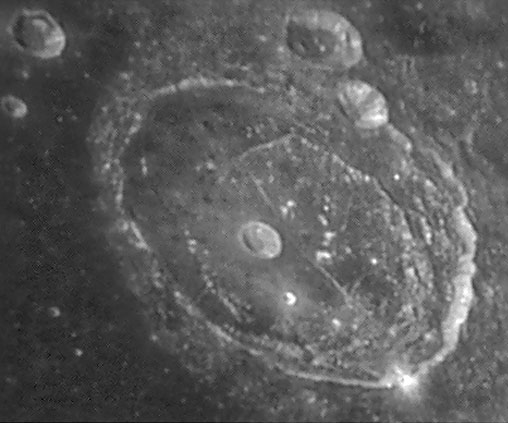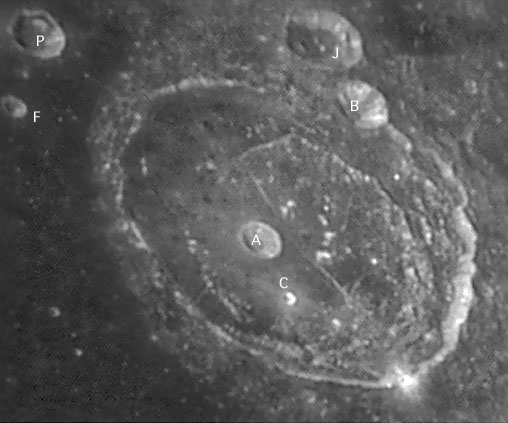December 10, 2015
Full Moon and High Res
Originally published December 21, 2004
Image Credit: Paolo Lazzaroti |
|
Full Moon and High Res Almost all of the really great LPOD images are dramatic low sun conditions, views that enhance low relief features. But this image by Paolo Lazzaroti demonstrates that good pictures and new information also come from high sun images with high resolution and good tonal values. If you compare this image of Posidonius with low sun ones you will see that neither gives the full story. The low sun view depicts the smooth mare surface on the west side of the crater and the rille-cut plateau of the east. With high sun, small patches of dark material emerge that aren't detected elsewhere. Are these fresh lava brought up as ejecta by tiny impact craters? Also look at the inner walls and floors of the smaller craters. Both light and dark bands - formed by highland and mare rock ejecta - are visible within Posidonius B, J and P (see mouseover). Also compare the sizes of floors in A and B - is B's small because more material has slid down slope filling it in? And notice the two small peaks and strange wall peak(?) in J. These are minor features, modifications of and variations in impact structures, but I didn't know they existed until today. What are you missing by not imaging in high res during full Moon? Technical Details: Related Links: Yesterday's LPOD: Bi-Colored Moon Tomorrow's LPOD: Swell Linne |
|
Author & Editor: |
COMMENTS?
Register, Log in, and join in the comments.





